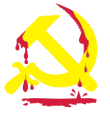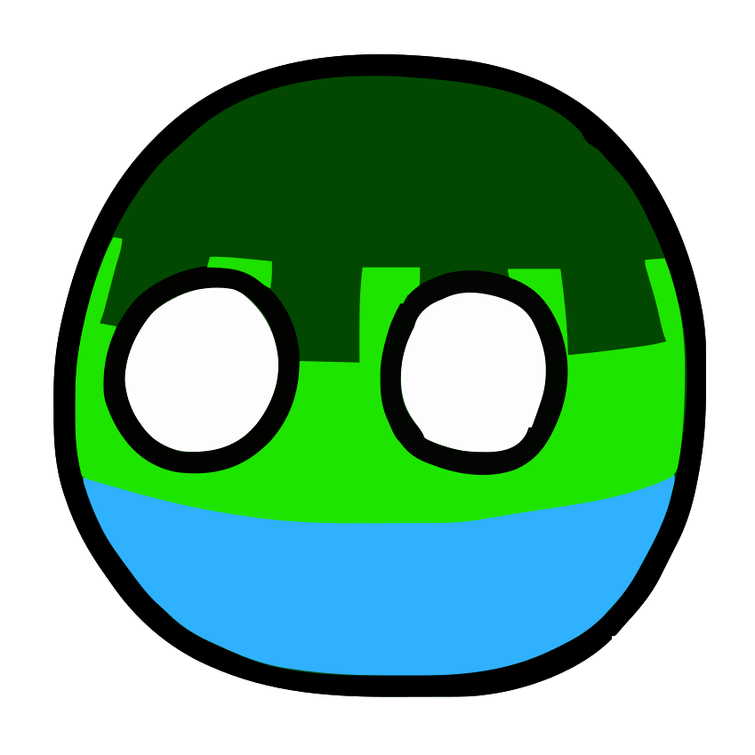World Wars in the Soviet Union
This page about the history of the USSR during WWII. For the main article of this character, see Union of Soviet Socialist Republics.
“
I am the man who arranges the tanks, that will make all the ![]() Nazis keep away! THE
Nazis keep away! THE ![]() FÜHRER IS DEAD! AND EUROPE IS
FÜHRER IS DEAD! AND EUROPE IS ![]() RED! And let’s all point our guns to the
RED! And let’s all point our guns to the ![]() U.S.A!
U.S.A!
— ![]() Complete History of the Soviet Union, Arranged to the Melody of Tetris
Complete History of the Soviet Union, Arranged to the Melody of Tetris
The Soviet Union’s participation in World War II was important in defeating the ![]() Axis Powers. His role in the conflict was multifaceted and impactful on several fronts. Initially allies with the
Axis Powers. His role in the conflict was multifaceted and impactful on several fronts. Initially allies with the ![]() German Third Reich to split up
German Third Reich to split up ![]() Poland, he switched teams when
Poland, he switched teams when ![]() Nazi betrayed him and invaded him. Then, he used “fighting Nazis” as an excuse to spread Soviet imperialism.
Nazi betrayed him and invaded him. Then, he used “fighting Nazis” as an excuse to spread Soviet imperialism.
Many people claim the Soviets liberated Europe from the ![]() Nazis. But the reality is, the Soviet’s
Nazis. But the reality is, the Soviet’s ![]() communism is far worse then Nazism. While the Nazis aim to eliminate a certain group of people (such as the
communism is far worse then Nazism. While the Nazis aim to eliminate a certain group of people (such as the ![]() Jews), communism aims at the total destruction of all people, including their own (as seen in
Jews), communism aims at the total destruction of all people, including their own (as seen in ![]() Stalin’s purges on many, MANY of his own party members), physically and spiritually.
Stalin’s purges on many, MANY of his own party members), physically and spiritually.
History
Before the "Great Patriotic War", ![]() Stalin purged his
Stalin purged his ![]() army. Later, a bunch of failed and useless military campaigns added more to the unnecessary loss of life.
army. Later, a bunch of failed and useless military campaigns added more to the unnecessary loss of life.
Invading Poland & Finland
In 1939, the Soviet Union signed the ![]()
![]() Molotov-Ribbentrop Pact with
Molotov-Ribbentrop Pact with ![]() Nazi Germany, a non-aggression treaty that included secret protocols dividing Eastern Europe. When
Nazi Germany, a non-aggression treaty that included secret protocols dividing Eastern Europe. When ![]() Nazi Germany requested for him to invade
Nazi Germany requested for him to invade ![]() Poland, he first hesitated. Soviet Union believed that
Poland, he first hesitated. Soviet Union believed that ![]() Poland was more ready for war then he actually is, plus, Soviet’s army was still fighting
Poland was more ready for war then he actually is, plus, Soviet’s army was still fighting ![]() Japan. But everything would resolve itself when the
Japan. But everything would resolve itself when the ![]() Japan heard about the
Japan heard about the ![]()
![]() Molotov-Ribbentrop Pact.
Molotov-Ribbentrop Pact. ![]() Japan was hoping on allying with the
Japan was hoping on allying with the ![]() German Third Reich against Soviet, but the non-aggression pact made it not possible. So
German Third Reich against Soviet, but the non-aggression pact made it not possible. So ![]() Japan decided to not fight anymore. As a result, the Soviets invaded
Japan decided to not fight anymore. As a result, the Soviets invaded ![]() Poland from the east shortly after
Poland from the east shortly after ![]() Germany's invasion from the west, effectively annexing territory according to the pact's provisions.
Germany's invasion from the west, effectively annexing territory according to the pact's provisions.
The Winter War took place from November 30, 1939, to March 13, 1940, between the Soviet Union and ![]() Finland. The war began when the Soviet Union invaded
Finland. The war began when the Soviet Union invaded ![]() Finland after he refused to give up territory. Despite being very outnumbered, the
Finland after he refused to give up territory. Despite being very outnumbered, the ![]() Finnish forces used clever tactics and the harsh winter to slow down the Soviet advance. The snipers of
Finnish forces used clever tactics and the harsh winter to slow down the Soviet advance. The snipers of ![]() Finland are known for taking out huge amounts of Soviet troops.
Finland are known for taking out huge amounts of Soviet troops.
The war ended with the Moscow Peace Treaty, where ![]() Finland had to give up 11% of his land but kept his independence. Still, Soviet Union was humiliated because no one ever thought that tiny
Finland had to give up 11% of his land but kept his independence. Still, Soviet Union was humiliated because no one ever thought that tiny ![]() Finland would cause so much Soviet casualties.
Finland would cause so much Soviet casualties.
“
If we keep throwing men at bullets, they will run out of bullets.
— ![]() Soviet Union’s strategy during the Winter War, probably
Soviet Union’s strategy during the Winter War, probably
Fight Against the Axis
In 1941, Operation Barbarossa began as ![]() Nazi Germany launched a massive invasion of the Soviet Union, breaking the
Nazi Germany launched a massive invasion of the Soviet Union, breaking the ![]()
![]() Molotov-Ribbentrop Pact. The surprise attack caught the Soviets off guard, and the
Molotov-Ribbentrop Pact. The surprise attack caught the Soviets off guard, and the ![]() Germans advanced rapidly into Soviet territory, leading to brutal sieges such as the one at
Germans advanced rapidly into Soviet territory, leading to brutal sieges such as the one at ![]() Leningrad. However, Soviet resistance stiffened, and the tide began to turn with decisive victories at
Leningrad. However, Soviet resistance stiffened, and the tide began to turn with decisive victories at ![]() Moscow and
Moscow and ![]() Stalingrad in 1942. The
Stalingrad in 1942. The ![]() United States also sent tons of weapons to the Soviets, which is contrary to what USSR simps say on the internet where they claim USSR defeated the Nazis all by themselves.
United States also sent tons of weapons to the Soviets, which is contrary to what USSR simps say on the internet where they claim USSR defeated the Nazis all by themselves.
Battle of Stalingrad
The Battle of ![]() Stalingrad, fought from August 23, 1942, to February 2, 1943, was a pivotal confrontation between
Stalingrad, fought from August 23, 1942, to February 2, 1943, was a pivotal confrontation between ![]() Nazi Germany and the Soviet Union during World War II.
Nazi Germany and the Soviet Union during World War II. ![]() Stalingrad, a key industrial city on the
Stalingrad, a key industrial city on the ![]() Volga River, held strategic importance for both sides. The battle began with a massive
Volga River, held strategic importance for both sides. The battle began with a massive ![]() German assault aimed at capturing the city and securing vital oil fields in the Caucasus. However, the Soviets fiercely defended
German assault aimed at capturing the city and securing vital oil fields in the Caucasus. However, the Soviets fiercely defended ![]() Stalingrad, engaging in intense urban warfare characterized by street-to-street fighting and close-quarters combat. The battle reached its climax in November 1942, when Soviet forces launched a counteroffensive, encircling the
Stalingrad, engaging in intense urban warfare characterized by street-to-street fighting and close-quarters combat. The battle reached its climax in November 1942, when Soviet forces launched a counteroffensive, encircling the ![]() German Sixth Army inside the city. Cut off from supplies and reinforcements, the German forces faced dire conditions, including harsh winter weather and Soviet bombardment. Despite
German Sixth Army inside the city. Cut off from supplies and reinforcements, the German forces faced dire conditions, including harsh winter weather and Soviet bombardment. Despite ![]() Hitler's refusal to allow a retreat, the
Hitler's refusal to allow a retreat, the ![]() German army surrendered in February 1943, marking a turning point in the war. The Battle of
German army surrendered in February 1943, marking a turning point in the war. The Battle of ![]() Stalingrad was a decisive Soviet victory, halting the
Stalingrad was a decisive Soviet victory, halting the ![]() German advance and boosting
German advance and boosting ![]() Allied morale while inflicting heavy casualties on the
Allied morale while inflicting heavy casualties on the ![]() Axis Powers.
Axis Powers.
Defeating the Axis
The year 1943 saw the Soviets achieve a significant victory at the Battle of ![]() Kursk, effectively ending
Kursk, effectively ending ![]() German hopes of a successful offensive on the Eastern Front. In 1944, the Soviet Union launched offensives that pushed the
German hopes of a successful offensive on the Eastern Front. In 1944, the Soviet Union launched offensives that pushed the ![]() Germans back and "liberated" territories in Ukraine and Eastern Europe. What these territories don’t know is that they’ll be under worse rule after the war. Meanwhile, the
Germans back and "liberated" territories in Ukraine and Eastern Europe. What these territories don’t know is that they’ll be under worse rule after the war. Meanwhile, the ![]() Allies launched the D-Day invasion of
Allies launched the D-Day invasion of ![]() Normandy, opening a second front against
Normandy, opening a second front against ![]() Nazi Germany.
Nazi Germany.
In 1945, the Soviet Union launched the ![]() Vistula-Oder Offensive, pushing deep into
Vistula-Oder Offensive, pushing deep into ![]() German territory and capturing
German territory and capturing ![]() Warsaw. By April, Soviet troops encircled
Warsaw. By April, Soviet troops encircled ![]() Berlin, leading to the Battle of
Berlin, leading to the Battle of ![]() Berlin and
Berlin and ![]() Adolf Hitler's suicide in his bunker.
Adolf Hitler's suicide in his bunker. ![]() Germany surrendered unconditionally on May 8, marking the end of World War II in
Germany surrendered unconditionally on May 8, marking the end of World War II in ![]() Europe. The Soviet Union emerged as one of the victorious
Europe. The Soviet Union emerged as one of the victorious ![]() Allied Powers, but the war left the country devastated, with over 20 million lives lost. Still, the USSR established puppet states in Eastern Europe from the remains of Nazi Germany.
Allied Powers, but the war left the country devastated, with over 20 million lives lost. Still, the USSR established puppet states in Eastern Europe from the remains of Nazi Germany.
Relations
Enemies
 Finland - HOW? YUO LITTLE RAT! YUO THINK YUO SO SLICK WHILE SNIPING! I STILL DEFEATED YUO!!
Finland - HOW? YUO LITTLE RAT! YUO THINK YUO SO SLICK WHILE SNIPING! I STILL DEFEATED YUO!!
 German Third Reich - YUO TRATIOR! I THOUGHT WE HAD NON-AGRESSION PACT!! YUO KILLED 20 MILLION OF MY PEOPLE
German Third Reich - YUO TRATIOR! I THOUGHT WE HAD NON-AGRESSION PACT!! YUO KILLED 20 MILLION OF MY PEOPLE not that I care about them or anything,1945 BEST YEAR OF MY LIFE!!! Polish Underground State - So what if I massacre your peoples, huh? Poland is must be into
Polish Underground State - So what if I massacre your peoples, huh? Poland is must be into  communist!
communist!
How to draw

- Draw a ball.
- Fill it with red.
- Draw the emblem of the sickle and hammer in the top left of the ball in yellow.
- Draw the eyes and you are done!
- Draw a ushanka or general's hat with the communist star or hammer and sickle on it (optional)
| Color Name | HEX | |
|---|---|---|
| Red | #CD0000 | |
| Yellow | #FFD700 | |
Gallery
-
On Magma’s Art Jam
-
ALLIES




